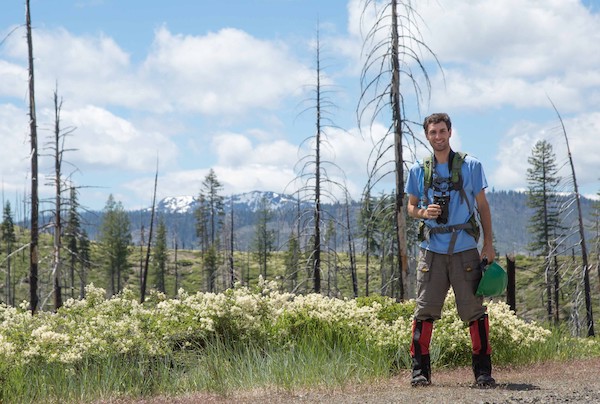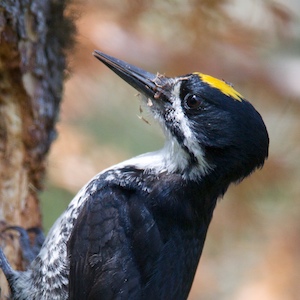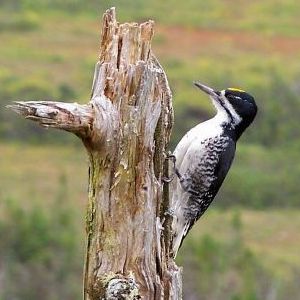IBP congratulates Dr. Andrew Stillman for successfully defending his Ph.D. dissertation Black-backed woodpecker resource selection and demographic responses to variation in fire characteristics this week. Andrew conducted his dissertation research in partnership with IBP, in conjunction with our long-running Black-backed Woodpecker ecology and forest management program.
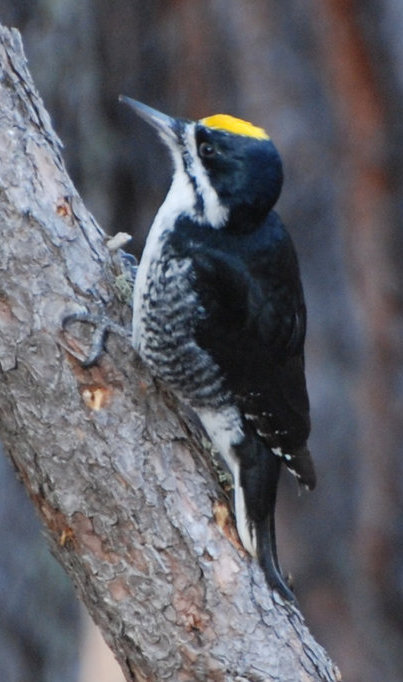
A Black-backed Woodpecker. Photo by USFWS.
Andrew began working on Black-backed Woodpeckers in 2015 when he started as a graduate student in Dr. Morgan Tingley's lab at the University of Connecticut. He spent three field seasons working alongside IBP seasonal crews in the Sierra Nevada, utilized IBP data in his analyses, and to date has published 6 scientific papers in collaboration with IBP co-authors – and more papers are in the pipeline! Taken together, this work advances our understanding of how animals cope with patchy, ephemeral resources, and vividly demonstrated the value of pyrodiversity. It also upends our understanding of what Black-backed Woodpeckers in burned forests need to thrive – yielding a more nuanced picture of habitat needs that will help land managers to better manage burned forests for Black-backed Woodpeckers.
Andrew's excellent work on Black-backed Woodpeckers has received professional acclaim: he won a Graduate Research Innovation award from the Department of the Interior's Joint Fire Science Program and the Best Student Oral Presentation Award at the 2020 virtual meeting of The Wildlife Society. It has even earned some media attention- his 2019 research paper on woodpecker nest placement and pyrodiversity, published in collaboration with IBP scientists, was covered by media outlets from National Geographic to Newsweek.
While we are proud to see Andrew fledge (into some less severely burned habitat where he can avoid predators) we're going to miss him! "Andrew was a pleasure to work with every step of the way - in addition to his intellect and perseverance, he brought a fresh perspective to the project that really elevated our science," says IBP Executive Director Rodney Siegel. Before he goes, we took a few minutes to talk to him about his experience working with Black-backed Woodpeckers and where he is headed next.
What came first: an interest in science or an interest in birds?
My first interest was learning the natural history of anything I could get my hands on. Growing up, it started with insects and gradually expanded to vertebrates – especially amphibians and reptiles.
How did you get interested in birds?
As a teenager, I started to grow weary of watching the same handful of local critters over and over (Buffalo, NY isn’t known for reptile/amphibian biodiversity). That’s when I received a pair of binoculars, and my world opened up to the incredible diversity of birds in the area.
How did you get involved with IBP?
I began working with IBP early in graduate school with Morgan Tingley, and it has been a joy to work with IBP on many projects since then. It’s a privilege to work with a group of such capable, gifted, and passionate people.
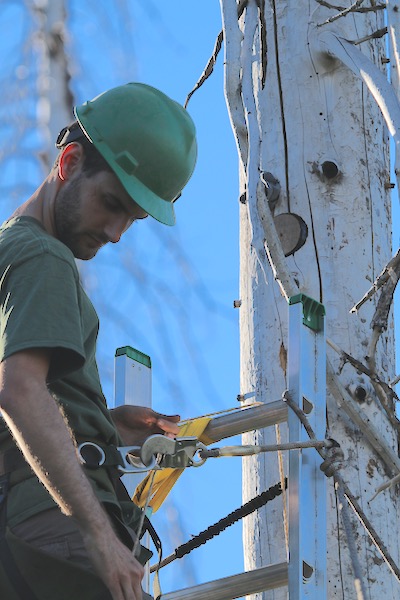
Stillman retrieves Black-backed Woodpecker nestlings from the nest so they can be fitted with radio transmitters. Photo by Morgan Tingley.
Prior to beginning my fieldwork in California and meeting IBP folks for the first time, I purchased a bunch of field equipment and shipped it directly to an IBP fieldhouse in the Sierra. When I arrived, much to my surprise, the field crew had wrapped every box in bright wrapping paper and created a floor-to-ceiling pile in the middle of the living room! They sat around gleefully as I unwrapped each “present” as if it were a holiday party. Just like the permanent staff, IBP’s seasonal field researchers are friendly and fun people.
What do you love most about Black-backed Woodpeckers?
Black-backed woodpeckers are full of surprises. We spent a lot of time tracking and observing individual birds in the field, and I loved learning the behavioral differences between each of them. Some birds wouldn’t let us get within 100 feet, while others would forage happily within arm’s reach, showering us with woodchips while searching for food.
What do you love most about working in the Sierra?
My favorite aspects of fieldwork in the Sierra are those daily moments when something takes your breath away – a view, an animal sighting, or maybe just the stillness in wild places.
What are your next steps career-wise?
I’m heading to the Cornell Lab of Ornithology to learn how we can harness citizen science data from eBird to address conservation challenges. First up: working with the Fish and Wildlife Service to model Golden Eagle populations.
Do you think you will work with Black-backed Woodpeckers again?
There is still a lot to learn! It would be great to continue working with this species, perhaps even closer to home in the Adirondack Mountains of New York.
Congratulations Dr. Stillman! We can't wait to see the great work you'll do at Cornell.


